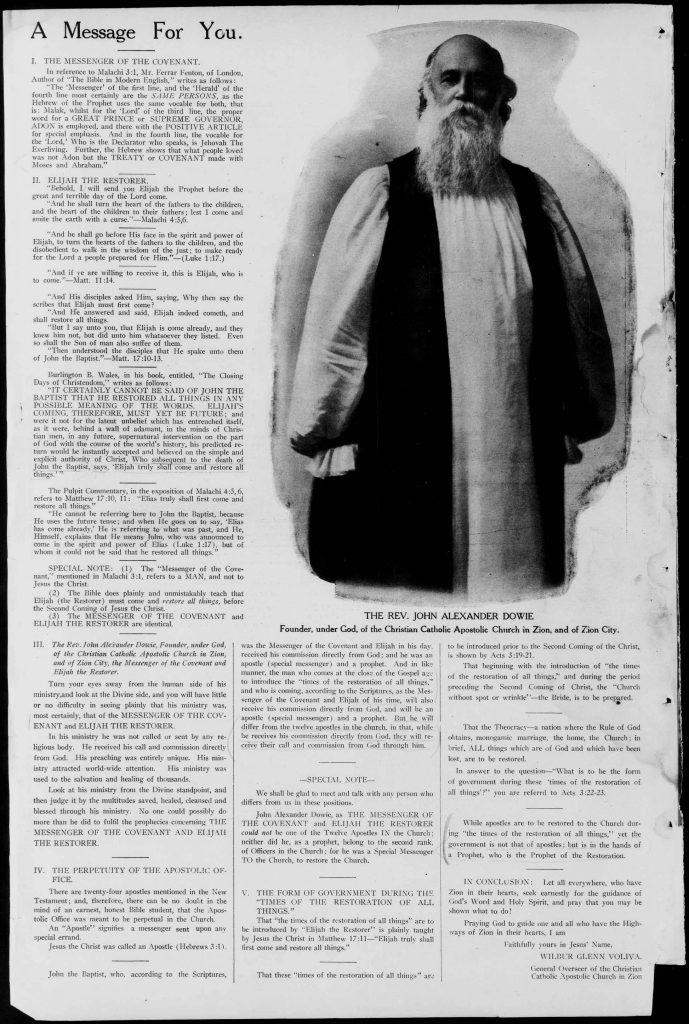Zion City was a utopian religious community founded in July 1901 by John Alexander Dowie, an evangelical minister and pioneer of Pentecostalism in the United States. Dowie emigrated from Australia in 1888, and eventually settled in Chicago where, in 1893, he established a ministry near the World’s Columbian Exposition. Central to Dowie’s ministry was the practice of faith healing, and it proved enormously popular. He soon formed a publishing company to issue his sizable output of periodicals, books, and pamphlets. In 1896 he began planning a utopian religious community, to be named Zion City, which would serve as a refuge from the many social problems troubling American cities at the time, the same problems attracting the attention of contemporary Progressive Era reformers. Whereas most Progressive Era reformers viewed these problems as evidence of social, economic, and political dysfunction, Dowie saw them as evidence of religious and moral decay. He believed that only complete subordination to religious authority could solve the problems of modernity, and Zion City was planned as a modern day church-state, or theocracy, which is why the newspaper was called the Zion City Theocrat.
The Theocrat was actually the creation of Dowie’s successor, Wilbur Glenn Voliva, who replaced Dowie as church leader after Dowie became embroiled in a massive scandal over his mismanagement of Zion City finances. Despite Dowie’s disgrace, Voliva continued running the town according to Dowie’s religious program, with faith healing as its centerpiece. Voliva also continued Dowie’s prohibitions against smoking, drinking, dancing, theater, modern medicine, and the consumption of pork. Although Dowie died seven years before the Theocrat began publication, his name, words, and image appeared regularly in the newspaper throughout its entire run.

Voliva published his weekly “Tabernacle Address” in each issue of the Theocrat, along with columns expounding church doctrine. Because the town was governed by a church, the paper’s focus was, unsurprisingly, religious. It did, however, contain a large amount of news, especially local news, which serves as a valuable source of information about Zion during its theocratic period. National and international news seems to have been taken from Chicago papers, and rewritten by local reporters. The paper also published local accounts of divine healing, presented as epistolary testimonies addressed to Voliva. Such testimonies of faith healing were the mainstay of the paper’s companion publication, Leaves of Healing, which circulated internationally. The Theocrat, in contrast, was a local newspaper intended for the citizens of Zion City. Voliva’s religious writing appeared in both publications.
In 1918, the name of the town was changed to Zion, and in 1935 the town ceased to be governed as a true theocracy. Voliva continued editing and publishing both periodicals until his retirement in the 1940s. He was succeeded by Michael J. Mintern, who had been Voliva’s assistant. During Mintern’s years, the community began to splinter as other churches moved into Zion. In 1949, the Theocrat merged with the Zion Community News to form the Zion-Benton News.
The Theocrat was digitized with funding from the National Endowment for the Humanities, as part of the National Digital Newspaper Program.